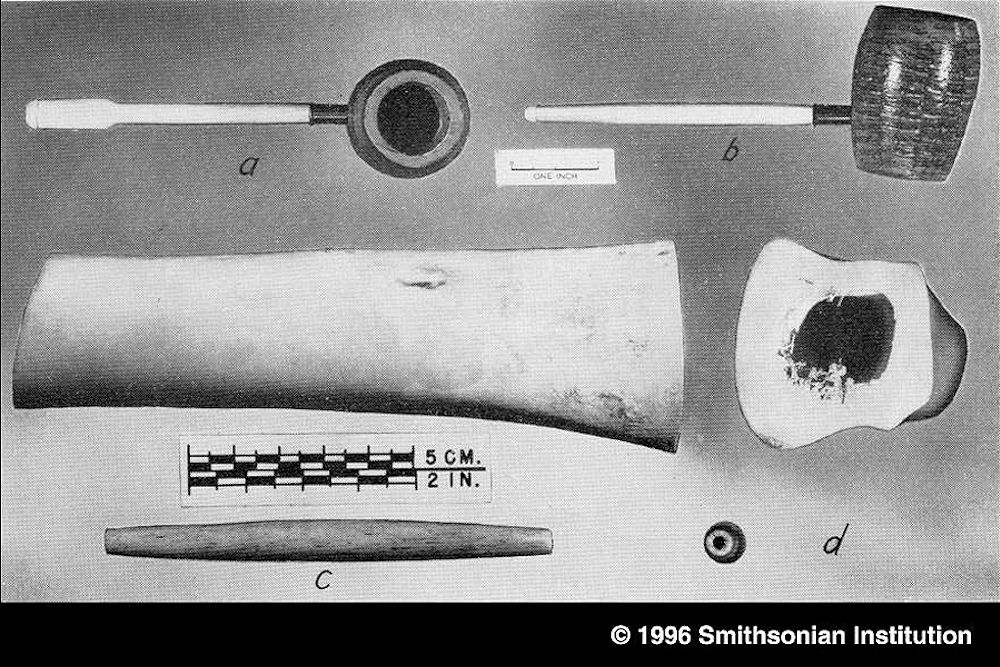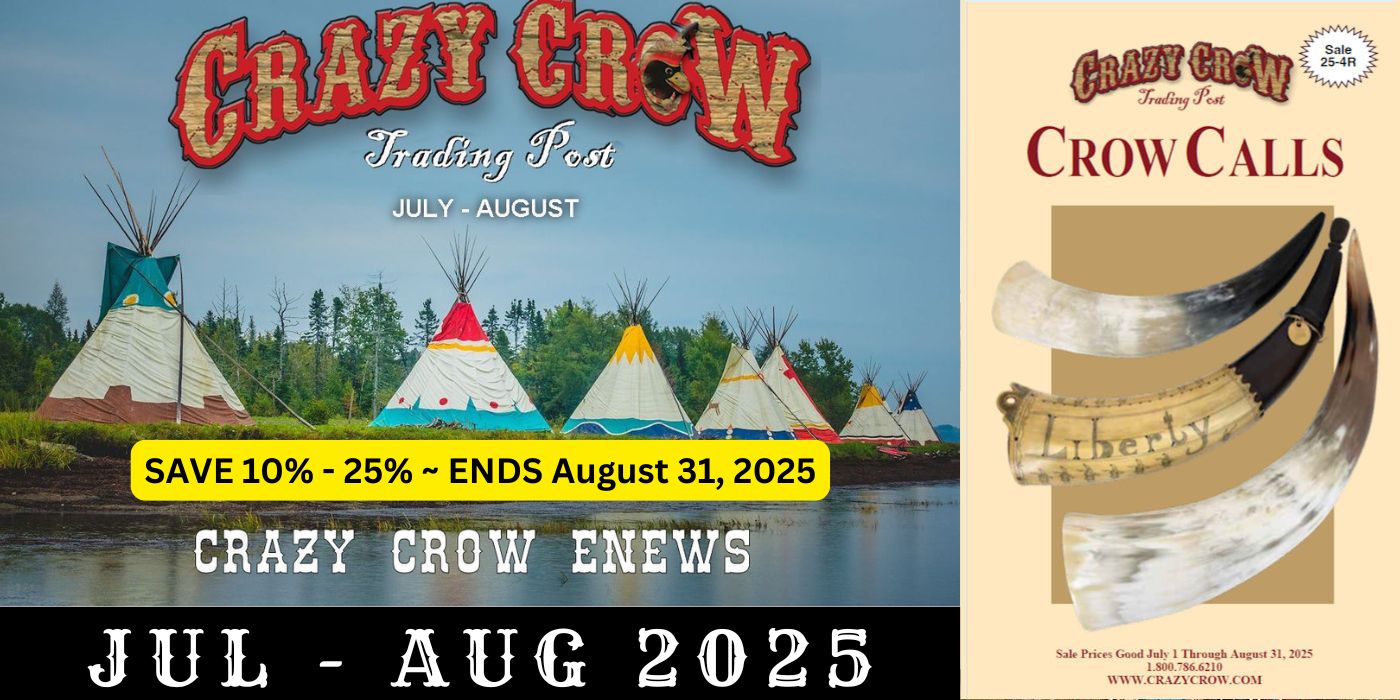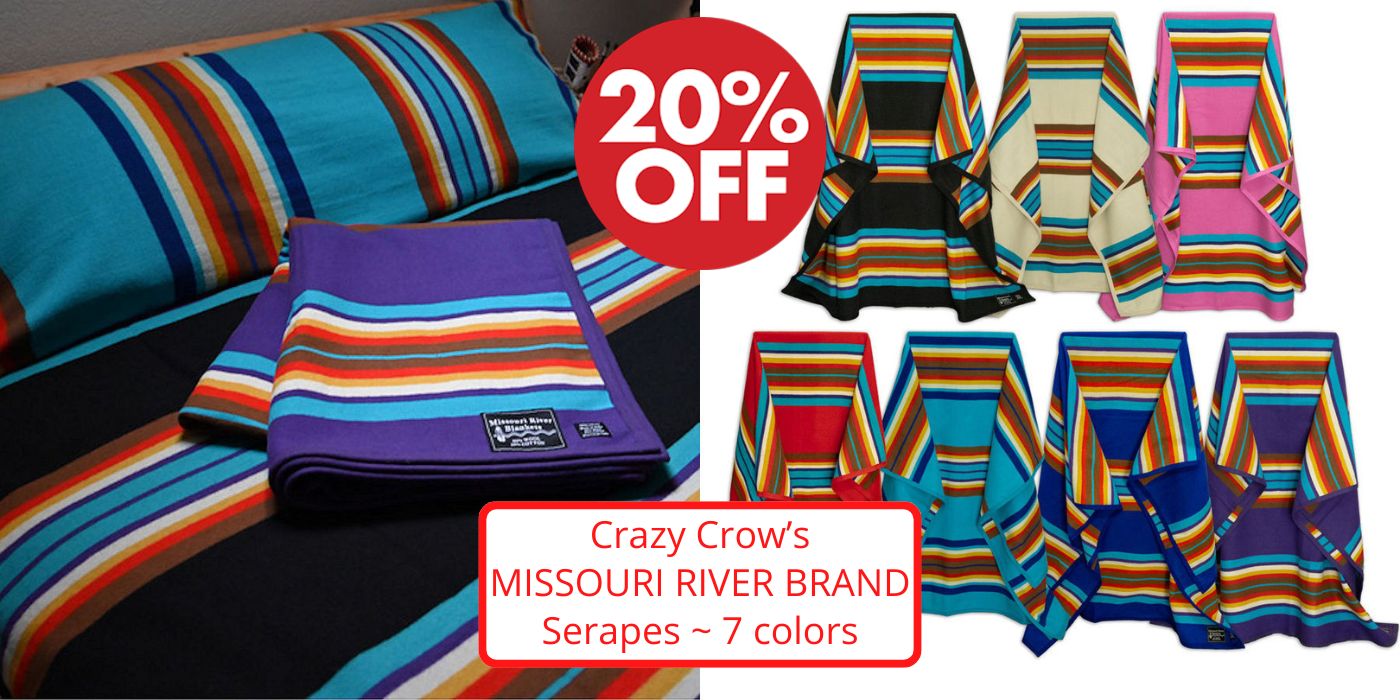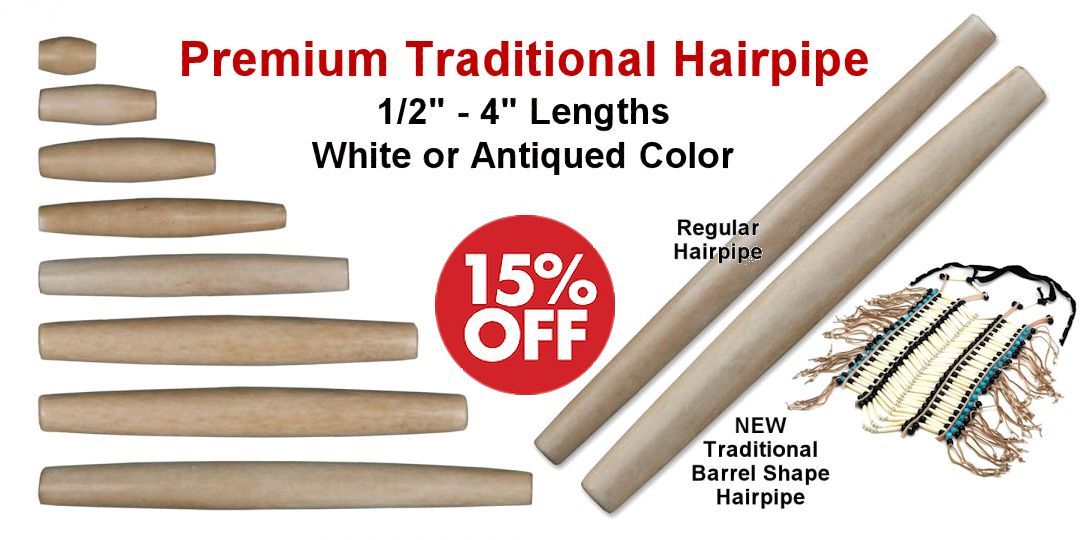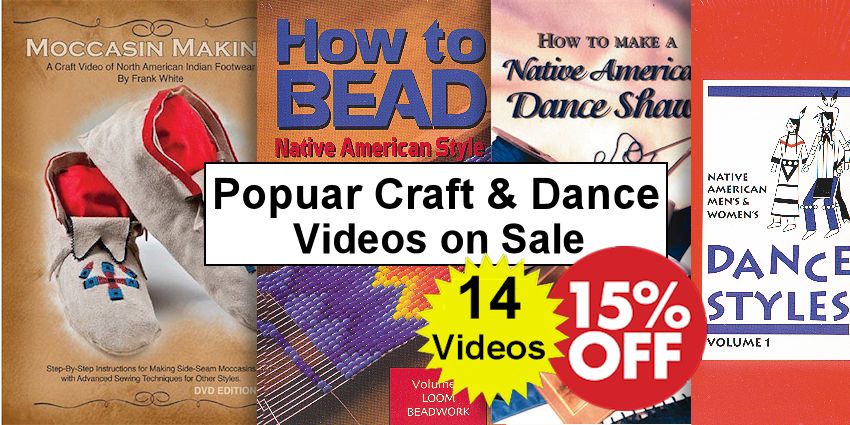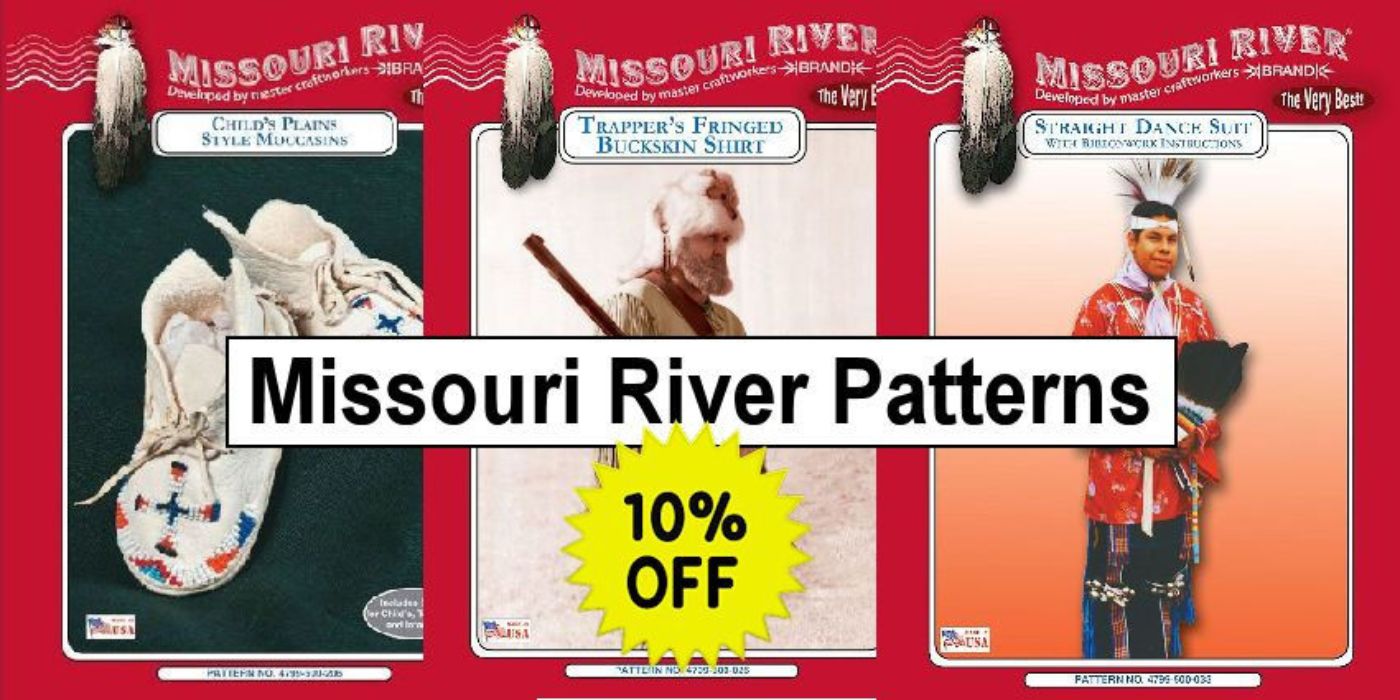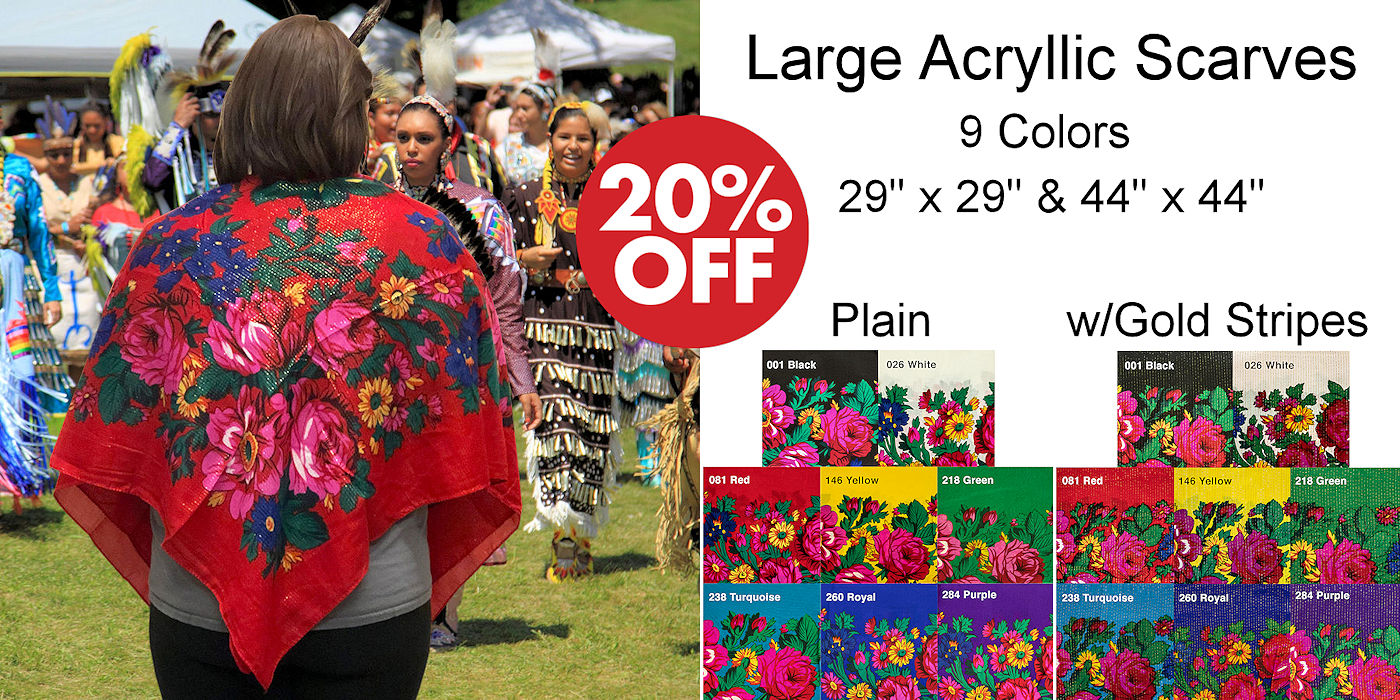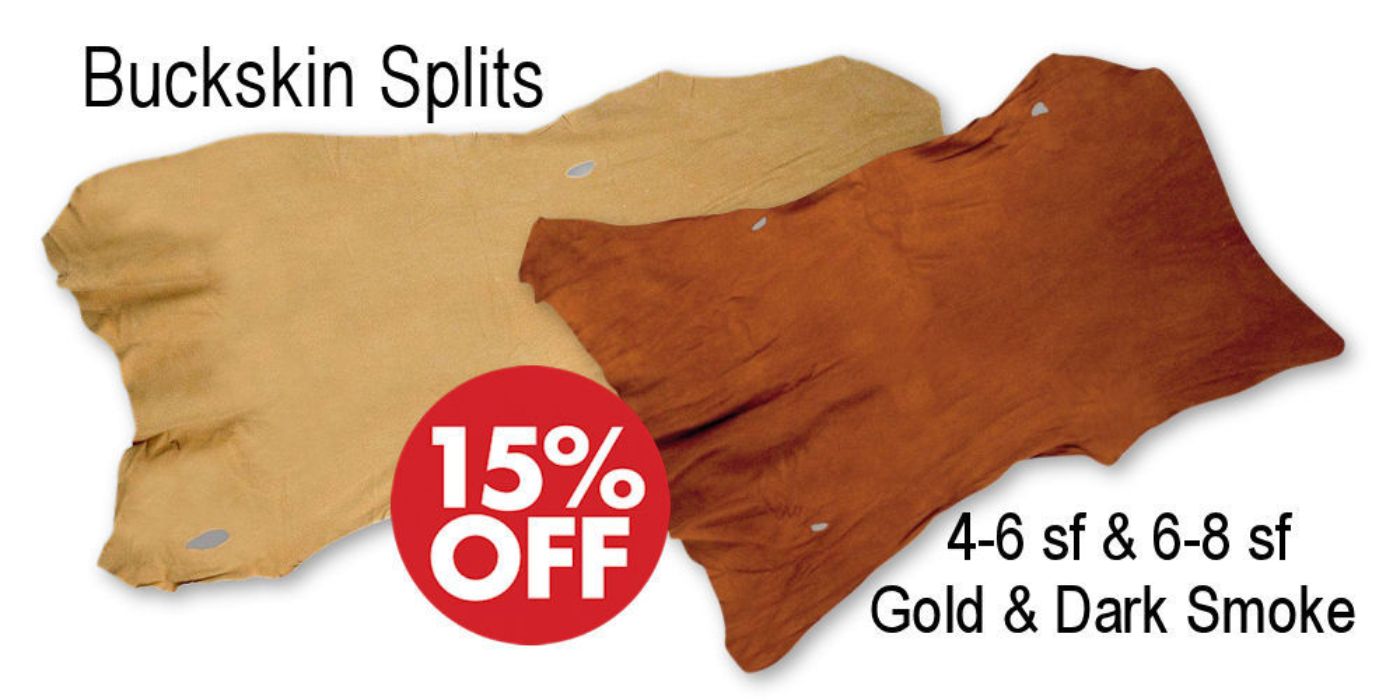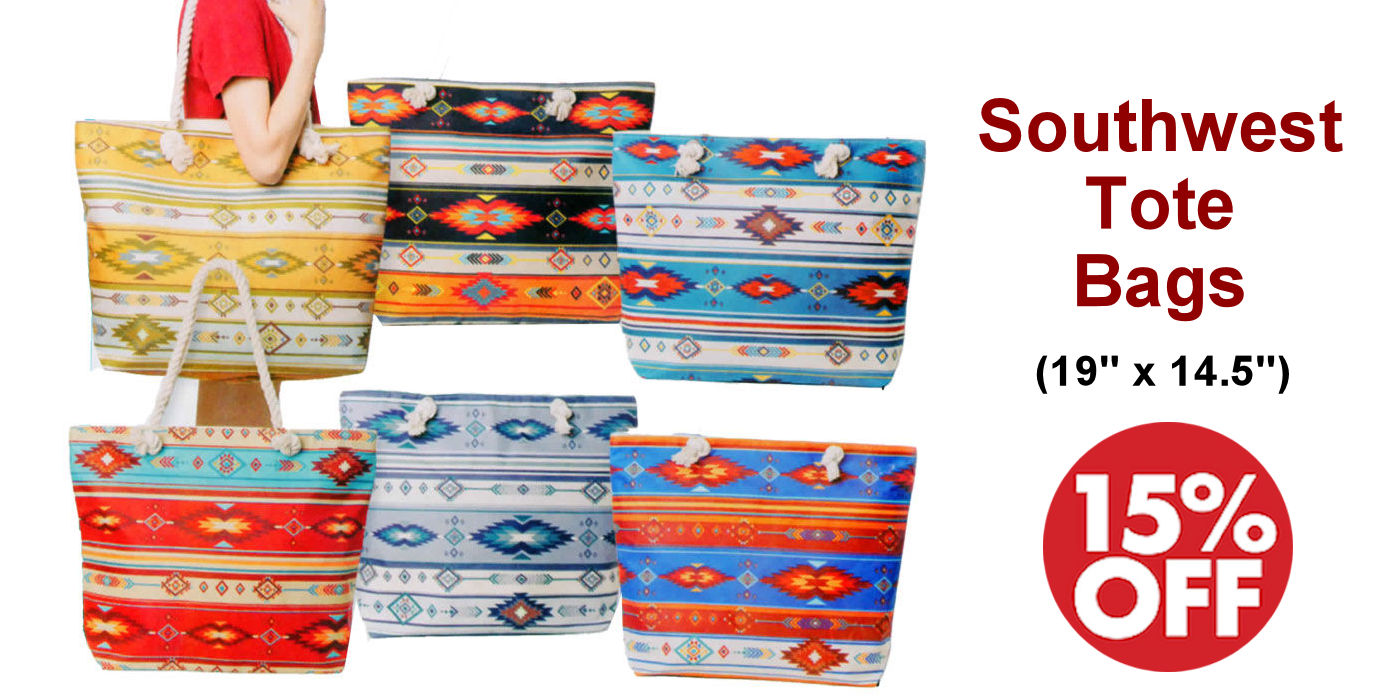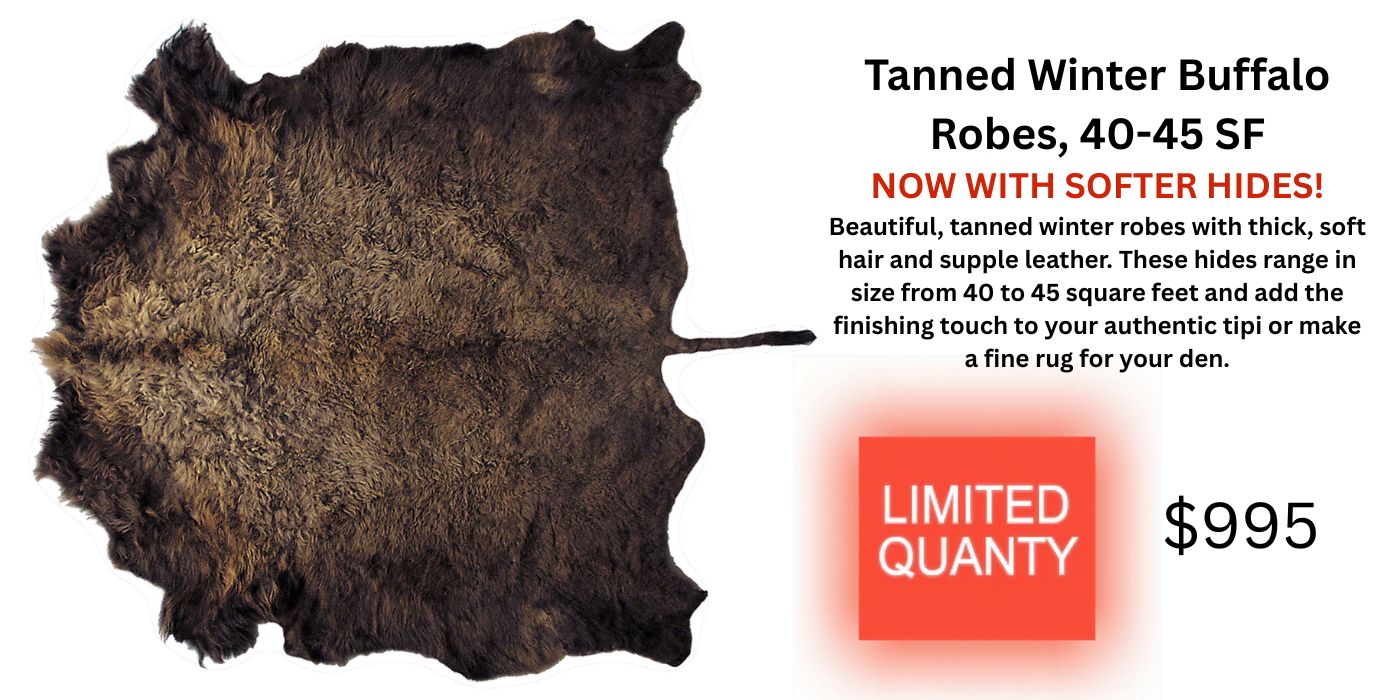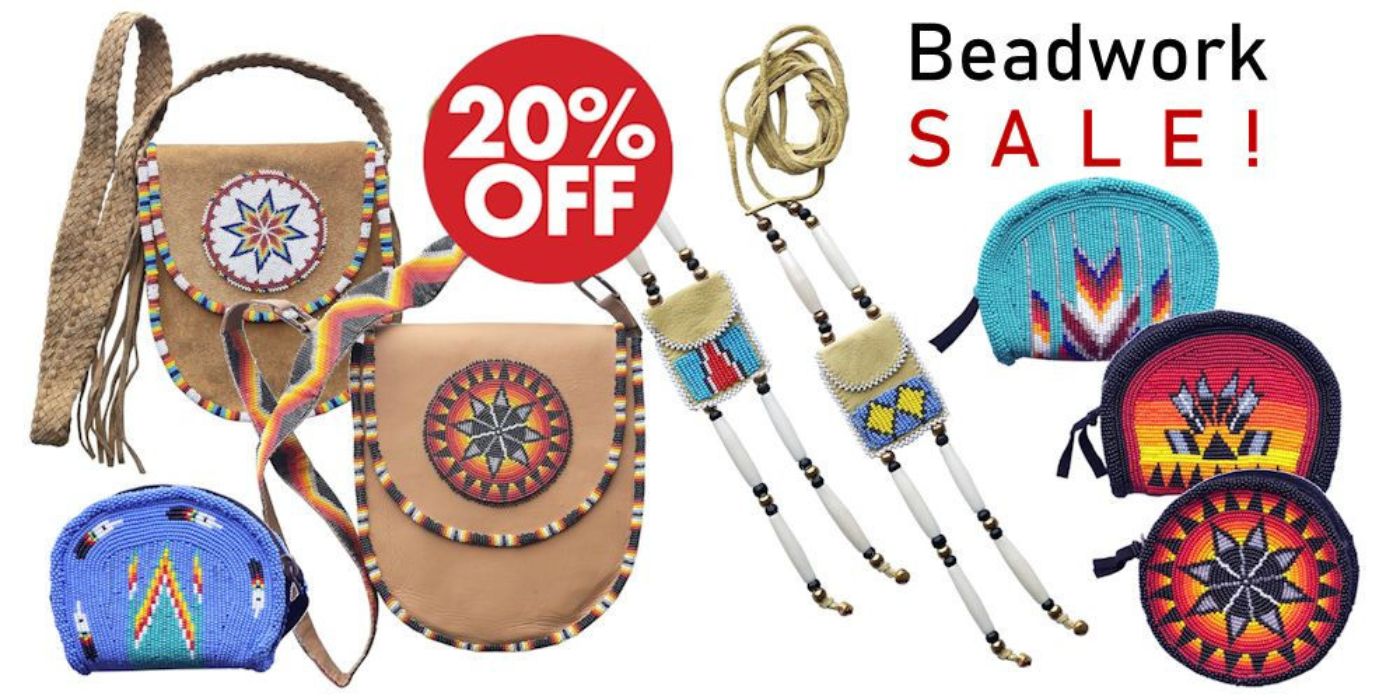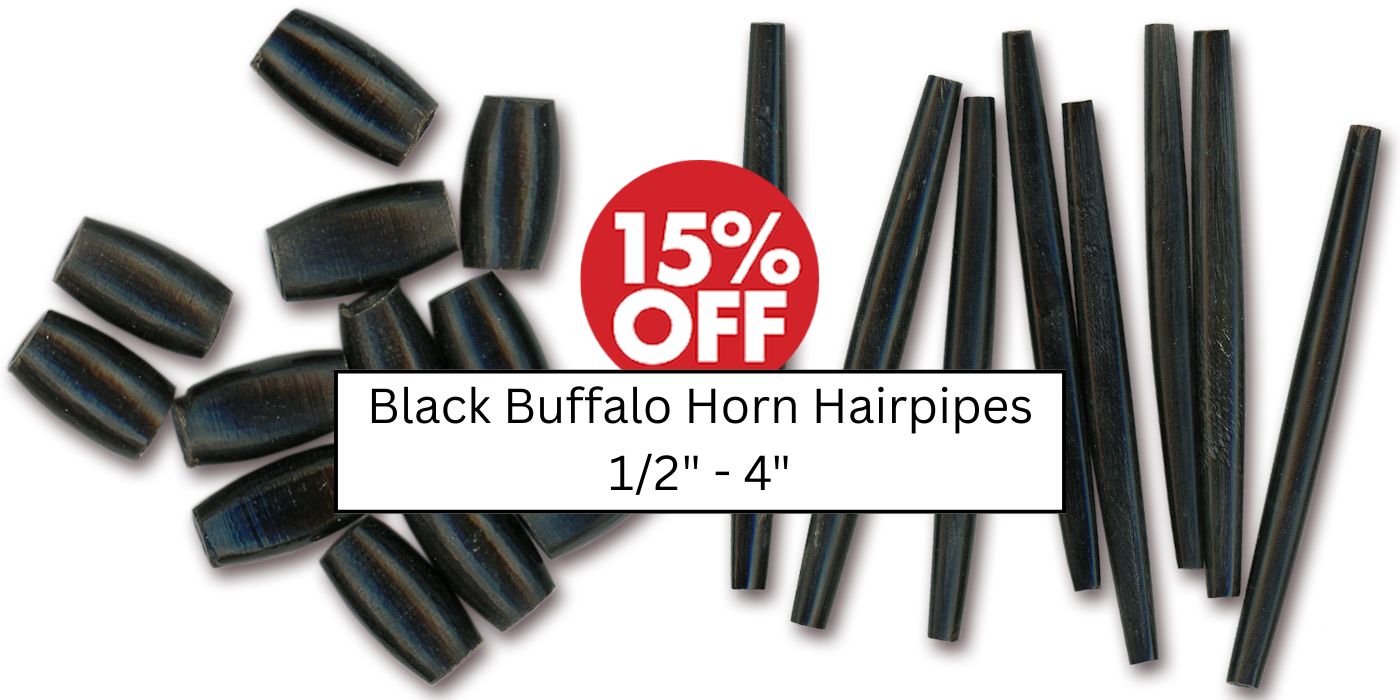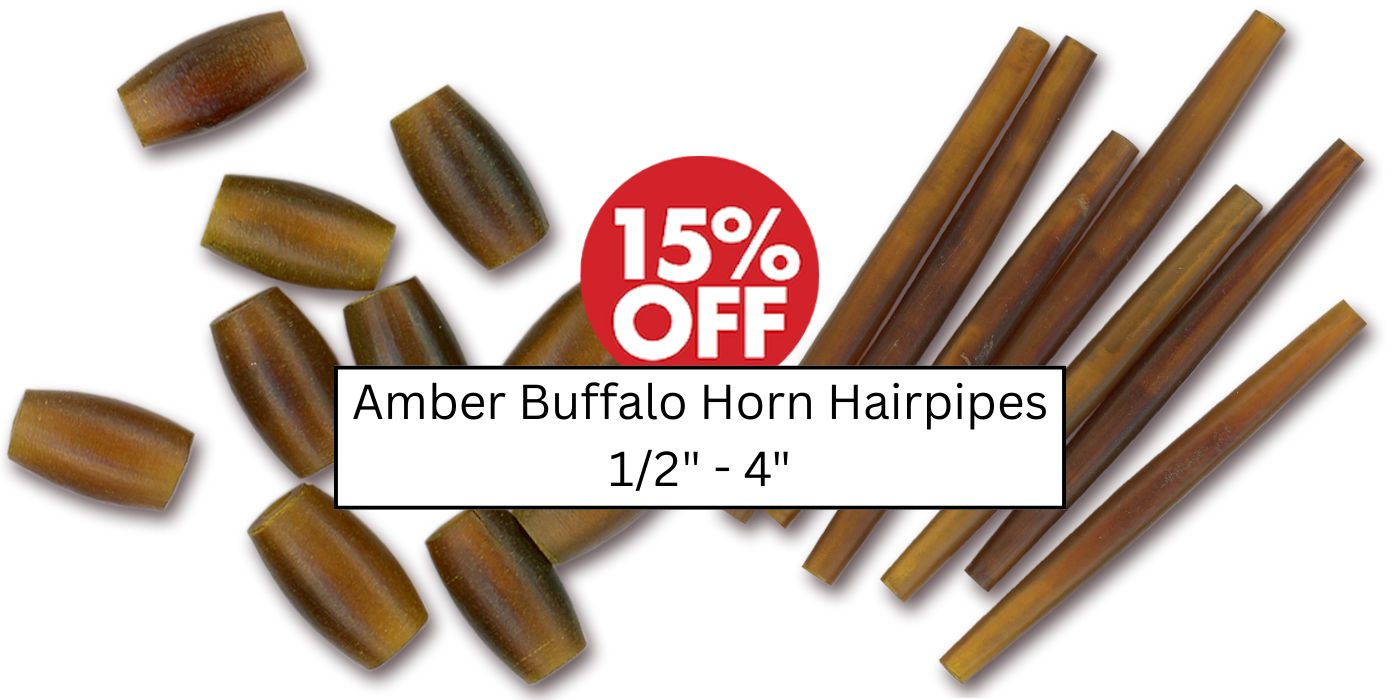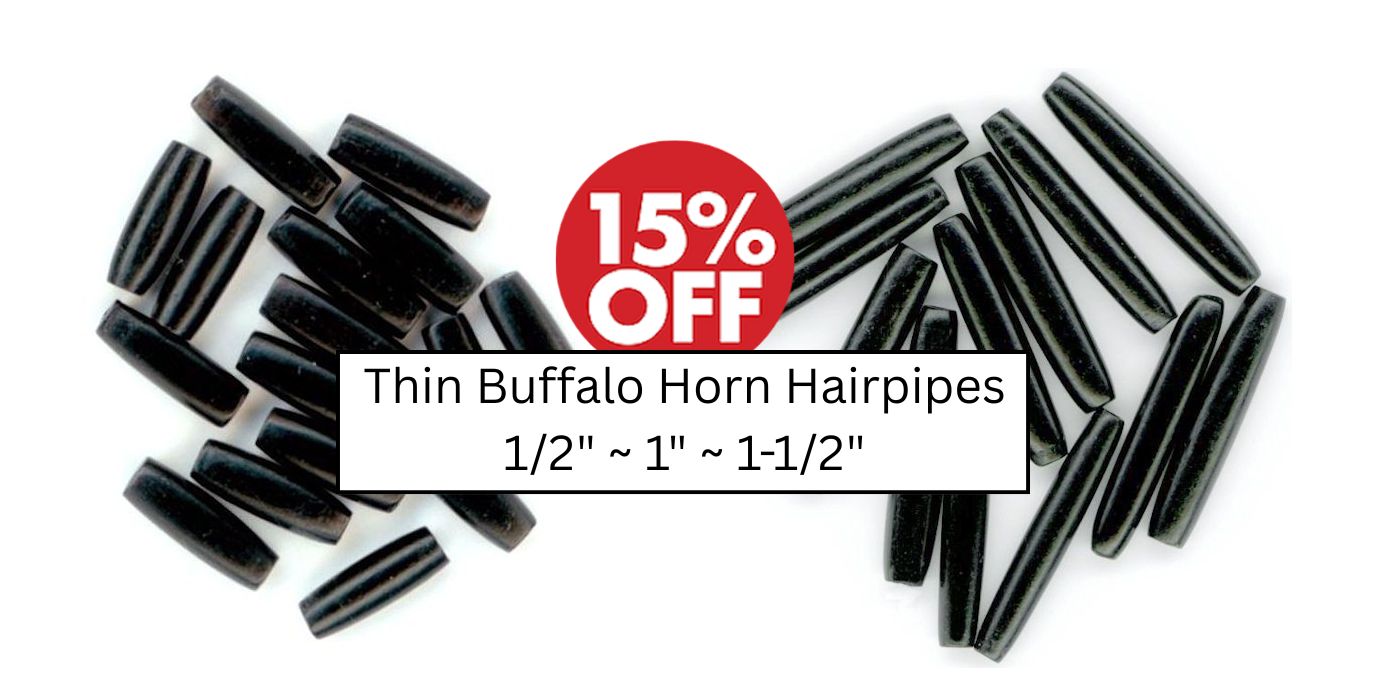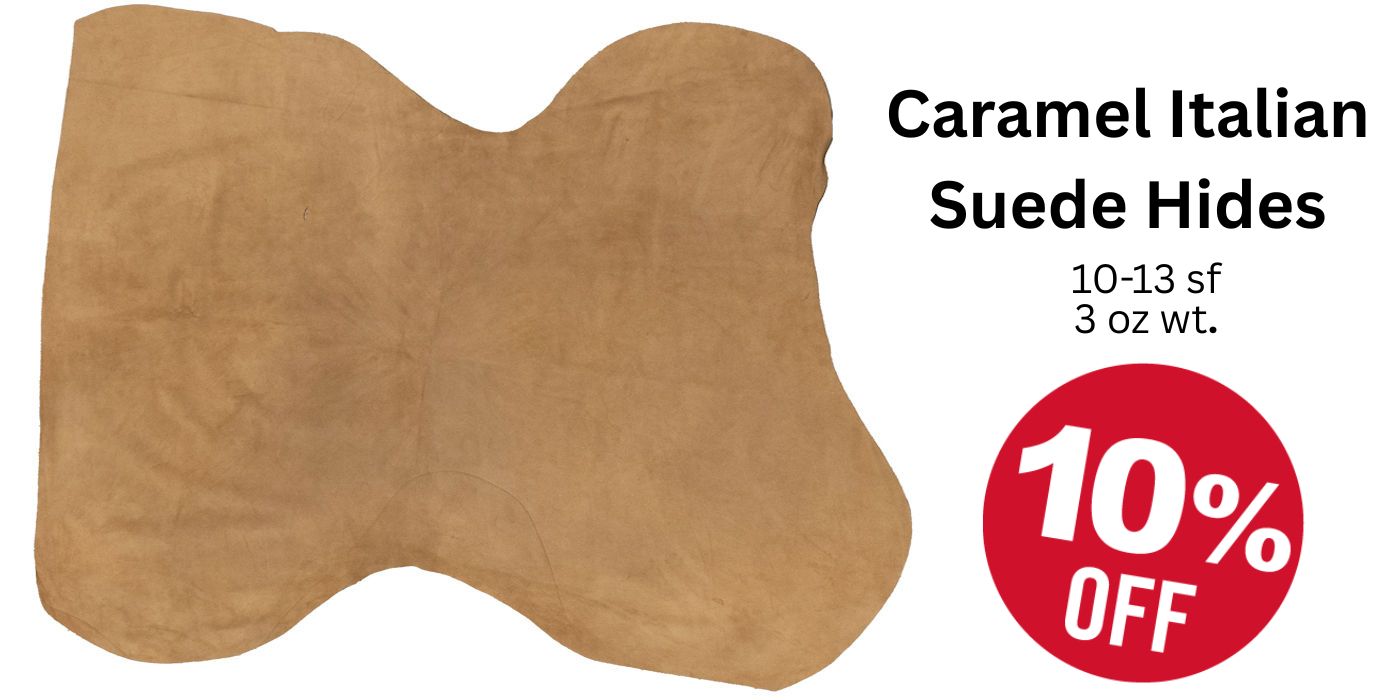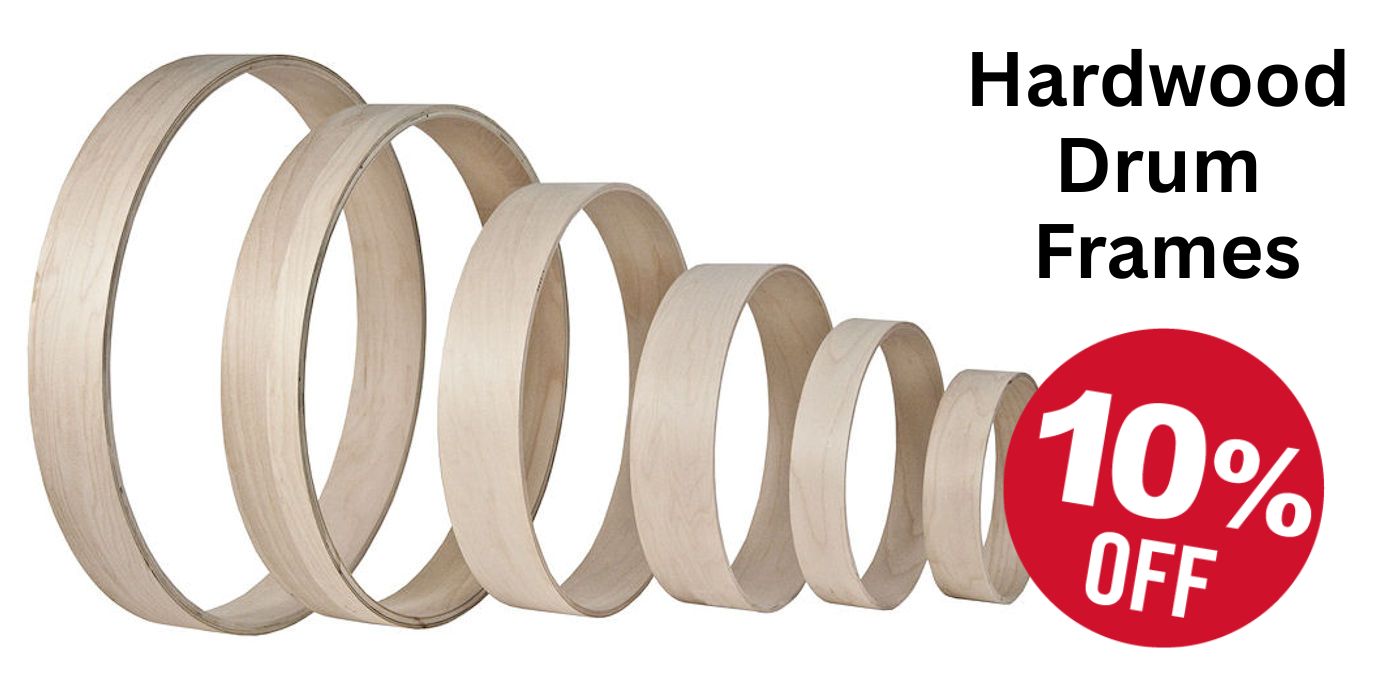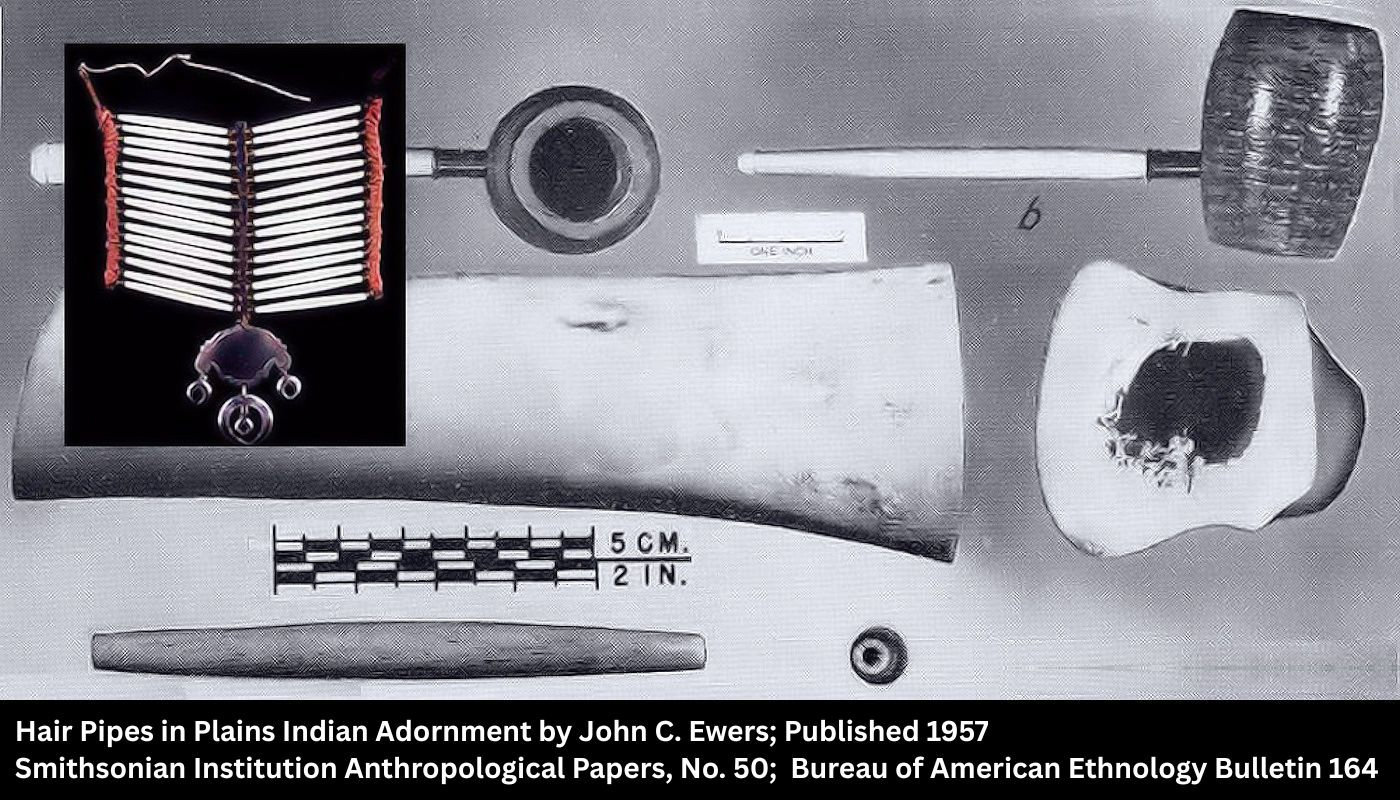

Bone Hairpipe History: From Shell to Bone
What can happen through trade when one culture listens to another?
By Crazy Crow Trading Post ~ May 30, 2020
Bone Hairpipe History:
From Shell to Bone
What can happen through trade when one culture listens to another
By Crazy Crow Trading Post ~ May 30, 202
The story of the development of the bone hairpipe told by John Ewers in his seminal 1957 Bureau of American Ethnology Bulletin: “Hair pipes in Plains Indian adornment, a study in Indian and White ingenuity,” [1] is very detailed and a bit hard to follow in places. To hopefully make the details of this story easier to follow, we will start with the conclusions found at the end of his research.
However much you may think you have known about the early use of shell hairpipes, the “singular” pivotal interaction of a trader to the Ponca Indians in 1880 and Ponca Chief White Eagle that led to the manufacture and trade of the cheaper and stronger bone hairpipe, clearly illustrates what can happen through trade when one culture listens to another.
John Ewers’ Conclusion
The introduction of glass and metal hairpipes among the Indians of the Eastern Woodlands by white traders in the colonial period illustrates the efforts of these traders to induce the Indians to accept substitutes for ornaments with which they had been familiar, both as accessories to costume and as articles of intertribal trade. Through trial and error the traders were attempting to provide at profit to themselves substitutes which would be acceptable to the Indians. Probably the glass ornaments offered by the French in the 17th century were too fragile and the silver ones supplied by the English in the 18th century were too expensive to gain widespread popularity among the Indians.
The invention of the shell hairpipe by New Jersey wampum makers prior to 1800 may have been motivated by the desire to produce a cheaper hairpipe which could be sold to Indians in greater numbers. It is not improbable that the inventor or inventors of the commercial shell hairpipe had knowledge of the earlier use of native-made conch-shell ornaments by the Woodland Indians. However, they made these ornaments from the lips, not the columns of shells. The early shell hair-pipe makers had had previous experience in working clamshells into wampum and they adopted the same tools employed in wampum making to the manufacture of hairpipes.
The efforts of the Campbell family of Pascack (now Park Ridge), N.J., to control the manufacture of shell hairpipes for the Indian trade, although not completely successful, must have had the effect of limiting the output of shell hairpipes in the first half of the 19th century, when the drilling of these ornaments was a laborious, hand-tooled operation. Through the great fur-trading companies of Canada and the United States, through independent traders, and through agents of the United States [p. 74] Government shell hairpipes were distributed widely, and in increasing numbers, among the Plains Indian tribes prior to 1850. Nevertheless, during this period the Plains Indians appear to have used hairpipes rather sparingly as ear pendants and hair ornaments and in necklaces.
The development of the elaborate breastplate, an ornament requiring large numbers of hairpipes, by the Indians appears to have coincided in time with the shift of hair-pipe manufacturing from a hand to a mechanized operation after 1850. Although the invention of the hair-pipe breastplate by the Comanche may have antedated the invention of the laborsaving, pipe-drilling machine by the Campbells, it is certain that the widespread use of hairpipe breastplates among the Indians followed the perfection of that machine and resultant increase in hair-pipe production.
The invention and Indian adaptation of the cattle-bone hairpipe about 1880 shows still more clearly the interplay of Indian and white ingenuity in the development of a cheaper, more sturdy hairpipe. It was an Indian, the Ponca chief White Eagle, who first recognized the superiority of bone over shell material in costume ornaments when he acquired some corncob pipestems of bone from a trader. [2] Once acquainted with the Indian desire for hairpipes of bone, men who supplied the Indians proceeded to locate a supply of raw bone material, to perfect methods of manufacture of bone hairpipes, and to supply quantities of the finished pipes to Indian traders in the field. The form of the bone hairpipe was patterned exactly after the shell one which it replaced. So superior was the bone hairpipe in the eyes of the Indians that within a decade the demand for shell hairpipes decreased to the point that it was no longer practical for the New Jersey manufacturers to make them. Meanwhile, on the Indian reservations of the West a period of greater and more elaborate use of hair-pipe ornaments was inaugurated, employing the cheaper, stronger bone articles. Not only did larger breastplates for men and more complex necklaces for women come into use, but a new use of hairpipes as bandoliers gained some popularity. [3] Indians looked upon these articles as valuable possessions and desirable gifts.
The Hairpipe
For nearly 200 years, Europeans who traded with the Indians of the Eastern Woodlands and the Great Plains, referred to a tubular bead measuring 1-1/2″ inches or longer by the name of “hairpipe.” The origin of the name is obscure, and by itself fails to suggest the variety of ways in which Indians employed these long beads as articles of personal adornment. The name itself fails to suggest the variety of ways in which Indians used these long beads as articles of personal adornment. It appears probable that the trade hairpipe was a white man’s substitute for a type of long, cylindrical ornament which had its origin in prehistoric Indian culture.
This appears to be the only certain early historic reference to a method of wearing long, conch-shell beads by Indians. It appears logical that the name “hairpipe” consistently applied by traders to the long, hollow, cylindrical ornaments supplied to Indians of the Woodlands and Plains in later years was derived from the traders’ knowledge of Indian usage as hair ornaments of roughly similar-appearing articles of native manufacture.
Native American Prototypes of Trade Hairpipes
There is archeological evidence of Indian use of long, tubular beads of bone, shell, copper, and stone before the time of Columbus. Of these prehistoric ornaments, the long shell bead, made from the column of the marine conch, seems to have been employed most widely over an extended period of time in the intertribal trade of prehistoric peoples. Trade in these ornaments and/or the marine
shells from which they were made is strongly indicated by discoveries of these beads in archeological sites in the interior of thee Eastern Woodlands far removed from the seacoast where the marine conch was to be found.
Limitations of the Shell Hairpipen
In the years prior to 1880 the hairpipe in common use among the Plains Indians were those manufactured from the shell of the Strombus gigas by merchants in New Jersey. Although this material was used in making hairpipe ear and hair pendants, necklaces, chokers, and breastplates, it was not ideal for those purposes. The long shell tubes were breakable, and broken hairpipes certainly decreased the attractiveness of the ornaments from which they were made. [4]
It was possible to replace the broken pipes with new ones, but it is clear from the pictorial record that they did not always do so. Bodmer’s literal rendering of the hairpipe hair ornament worn by Wolf Calf, the Piegan, in 1833 definitely shows a broken hairpipe. [5] A number of photographs of breastplates worn by Native Americans prior to 1880 depict one or more broken pipes. Perhaps the Southern Plains tribes showed their greater experience in working with hairpipes than had the Northern Plains Indians by developing a breastplate comprising four rows of relatively short pipes in preference to one of two rows of longer pipes. The short pipes were sometimes apparently made by sawing long hairpipes in two (tapered at one end only), were less apt to break than were the longer ones.
The “Invention” of the Bone Hairpipe
About the year 1880, at a time when the demand for large numbers of hairpipes for use in making elaborate breastplates was increasing, the Plains Indians began to obtain a cheaper and much less fragile hairpipe than the shell one long in use. The peculiar circumstances of the origin of this substitute, the bone hairpipe, comprise an interesting chapter in the history of Indian use of hairpipes which is at the same time a noteworthy case history in invention.
While Ewers was stationed on the Blackfeet Reservation in Montana in the early 1940s, both Frank Sherburne and his brother Joseph Sherburne, Browning merchants, independently told him of the role their father, the late Joseph H. Sherburne, had played in the “invention” of the bone hairpipe during his early days as a trader among the Ponca Indians.
The Records of Licenses to Trade state that Joseph H. Sherburne was issued a license to trade with the Ponca Indians between Arkansas and Shawkaskia Rivers in the Indian Territory on September 10, 1878. [6] Frank Sherburne said that in his father’s first year of trade with the Ponca, his wares included a quantity of corncob pipes. The corncob bowls were equipped with bone stems. These pipes sold readily but without comment from the Indians. Upon his next trip to the Ponca, Mr. Sherburne found the corncob pipes in great demand. White Eagle, chief of the tribe, showed him an elaborate neck ornament made of the bone stems of the pipes strung on buckskin thongs.
Chief White Eagle wanted more pipestems in quantity.
Mr. Sherburne, wanting to please the White Eagle, wrote to S. A. Frost, in New York, from whom he had purchased glass beads and other articles for the Indian trade, explaining the problem and asking if it would be practical to furnish a quantity of long, tubular bone “beads.” Frost considered the matter and after he became convinced that the demand for this product was great enough to justify its perfection, set about having the bone articles made. However, there was a delay of more than a year before the new bone “beads” were ready for the market.
When the new bone hairpipe became available in quantity, Frost not only sold them to Mr. Sherburne, but also to many other traders on other reservations as well.
Ewers had not seen a sample of the bone pipestem furnished the Ponca by Mr. Sherburne in 1878, however, Carl V. Otto, vice president of the Missouri Meerschaum Co., established in Washington, Mo., by Henry Tibbe, inventor of the corncob pipe in 1872, kindly furnished him for a pipe to study that is known to have been made by that firm prior to 1900. [7] The bone stem bears only a superficial resemblance to the bone “beads” perfected by Mr. Frost for the Indian trade.
Patterning Bone Hairpipe after Shell Hairpipes
In designing the bone beads Frost seems to have followed the pattern of the shell hairpipes which for so many years had been made for the Indian trade at Park Ridge, New Jersey, about 25 miles from his New York headquarters. Not only did the new bone beads follow the tapered form of shell hairpipes literally, but they were made in approximately the same lengths as the shell pipes. They were, in reality, bone hairpipes and became known to Indian traders as hairpipes. [8]
Wolfgang Sauber, CC BY-SA 3.0, via Wikimedia Commons Click image to enlarge Click image to enlarge
The Sherburne brothers had no knowledge of where or how the bone hairpipes were made. However, Mr. Otto supplied a valuable clue when he wrote Ewers that the bone stems of corncob pipes were furnished his firm by Armour & Co. of Chicago. Through the cooperation of J. V. Hurson of Armour & Co.’s Washington Office, Edward N. Wentworth, director of Armour’s Livestock Bureau in Chicago, was interested in the problem of the manufacture of the bone hairpipes.
In the absence of written records, he discussed the matter with long-time employees of the company, some of whom are now retired. He concluded that Armour & Co. definitely furnished the bone material from which the hairpipes were made, and that the raw material (bones) was supplied to Mr. Frost, of New York, in quantity. Mr. Wentworth stated that the bones from which hairpipes were made were the metacarpal or lower leg bones of cattle.
Shell Hairpipe Era Ends
No definite information is available regarding the process of manufacture of bone hairpipes. Power tools probably were used. They may have been drilled with a rotary-belt-powered drill and shaped on a lathe. Such methods of rapid manufacture of large numbers of bone hairpipes would have made it possible to offer them to Indians at a lower price than had been asked for shell hairpipes. It must have been the pressure of competition with this cheaper, stronger bone hairpipe that caused the New Jersey shell hair-pipe makers to discontinue operations in 1889, less than a decade after bone hairpipes began to reach the Indian country.
By BPL – Hubble Big Horse, Cheyenne Uploaded by Babbage, CC BY 2.0, Link Click image to enlarge
Uses of Hairpipes 1880-1910
In the period of general economic depression among the Plains Indians following the extermination of the buffalo, during which they subsisted largely upon Government rations, possession of an elaborate hair-pipe breastplate or necklace was a coveted symbol of greater-than-average prosperity among these proud people. Not only did the Indians wear these ornaments when they attended ceremonies and participated in traditional social dances on their own reservations, but they wore them when they dressed to visit the President and other government officials in Washington, when they took part in wildwest shows, such as the famous one organized by William F. Cody (Buffalo Bill) in 1883, and when they appeared in full regalia at national, regional, state, and local exhibitions or fairs. The cessation of intertribal wars after the Plains Indians were settled on reservations was followed by a period of increased friendly contacts between neighboring tribes formerly hostile to one another. Visits back and forth among these Indians were accompanied by the exchange of gifts between members of different tribes. These conditions encouraged diffusion of hair-pipe breastplates and necklaces during the Reservation Period.
Hairpipe Today: Wide Variety of Materials
Hairpipes today are available in several materials besides Bone. Depending on your the craft project (and budget), and your greater or lesser need for historical authenticity, you can use the least expensive version (Plastic Hairpipe in white, red, blue or black), or buffalo or other varieties of horn.
Offering Hairpipes in Variety of Materials & Colors
Crazy Crow Trading Post offers everything you need for great looking chokers, breastplates and other craft projects: bone hairpipe, buffalo horn and natural horn hairpipe, imitation hairpipe beads in white, red & blue. Chose from a huge selection of glass and metal beads to complete your project. Don’t forget to take a look at our breastplate and choker kits, too. View Hairpipe Products
Major Sources for this Bone Hairpipe History
This article is largely a rearrangement of the work of John C. Ewers’ 1957. “Hair pipes in Plains Indian adornment, a study in Indian and White ingenuity.” We have found this article freely used in other online articles, usually without credit. We have updated grammar to make it easier to read, and have replaced Mr. Ewers’ use of the first person with a third person narrative as we are using his research to tell this story, with our own additiions.
About John Ewers
John Canfield Ewers (July 21, 1909 – May 7, 1997) was an American ethnologist and museum curator. Known for his studies on the art and history of the American Plains Indians, he was described by The New York Times as one of his country’s “foremost interpreters of American Indian culture.”[9] He was instrumental in establishing the National Museum of American History and became its Director in 1964. At the time of his death he was Ethnologist Emeritus of the Smithsonian Institution and was the first recipient of the Smithsonian’s Exceptional Service Award as well as the Western History Association’s Oscar O. Winther Award and the American Alliance of Museums’s Distinguished Service Award.
Tag: bone hairpipe,bone hairpipe history, bone hair pipe, bone hair pipe history, hairpipe, hair pipe, hairpipe history, hair pipe history
Cheyenne Woman 1911, Edward S. Curtis Collection
Edward S. Curtis, Public domain, via Wikimedia Commons.
Click image to enlarge
Warren Harding and Native Americans at White House 1921 Library of Congress
President Harding Meets Native Americans 1921, Harris & Ewing, photographer, Public domain, via Wikimedia Commons.
Click image to enlarge
Native American Man Dressed in Bone Breastplate 1900 – Library of Congress
Native American Man Dressed in Bone Breastplate 1900, Heyn & Matzen, photographer, Public domain, via Wikimedia Commons.
Click image to enlarge
References
2. Ewers, HAIR PIPES IN PLAINS INDIAN ADORNMENT: A Study in Indian and White Ingenuity, (SMITHSONIAN INSTITUTION Bureau of American Ethnology Bulletin 164), 74.
3. Ibid.
4. Ibid., 61.
5. Ibid.
6. Ibid., 62.
7. Ibid., 63.
8. Ibid.
Rendezvous & Historic Reenactment Articles
Rendezvous & Historic Reenactment Resources
Current Crow Calls Sale
July – August
SAVE 10%-25% on popular powwow, rendezvous, historic reenactor, bead & leather crafter supplies. It’s official, Summer is here, and so is the heart of Powwow, Rendezvous & Historic Reenactment seasons. 4th of July Celebrations is here, and just blink and Labor Day will be here. This sale offers many popular items for Native American, Rendezvous & Historic Reenactment outfits. Sale items include our Missouri River Brand Serape Blankets, a big DVD sale, Missouri River Patterns, 18th Century Linen Hunting Shirts, select Damascus Knives, Buckskin Splits, Bone & Horn Hairpipe, Plastic Crow Beads, Leather Pouches & Bags, and much more!




